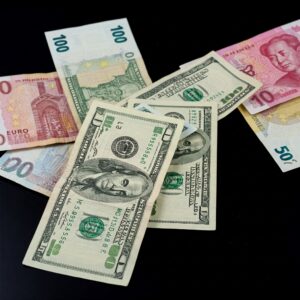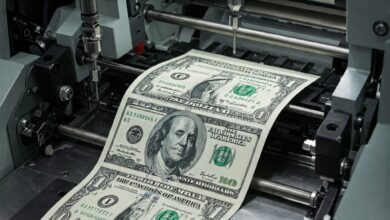Do you know where the $ symbol comes from?
Learn the origin of the symbol that represents money, the dollar sign
Ever wondered about that ubiquitous symbol, the ‘$’, that represents American currency and so much more in the global financial landscape? It’s a mark we see every day, but its history is richer and more intriguing than you might imagine. Let’s dive into the captivating journey of how this iconic symbol came to be.
From Spanish Silver to American Icon: Tracing the Dollar Sign’s Roots

The most widely accepted theory traces the dollar sign back to the Spanish “peso de ocho reales,” often referred to as the “Spanish dollar.” This silver coin was a dominant global currency during the 18th century, and it played a significant role in the early American colonies.
The abbreviation for the peso was often represented by “Ps,” “pˢ,” or “pesos.” Over time, it’s believed that the ‘P’ and ‘s’ evolved into the ‘$’ symbol we recognize today. The vertical strokes are thought to have originated from the loop in the ‘P’ or a simplified representation of the ‘S’.
The “Pieces of Eight” Connection: Another Piece of the Puzzle
You might have heard the term “pieces of eight” in pirate tales and historical contexts. These were the Spanish silver dollars, often physically cut into eight pieces to make smaller denominations. Some theories suggest that the two vertical bars in the ‘$’ symbol represent these divisions of the silver coin. While less widely accepted than the “Ps” theory, it adds another layer of intrigue to the symbol’s past.
Early American Usage: Solidifying the Symbol’s Place

As the United States adopted its own currency, the dollar, the need for a concise symbol became apparent. By the late 18th century, the ‘$’ symbol began to appear in American business correspondence and financial records. Its adoption was a practical solution for representing the new nation’s monetary unit efficiently.
Beyond Currency: The Dollar Sign’s Broader Significance

Today, the dollar sign transcends its primary function as a symbol for the U.S. dollar. It’s used to represent various other currencies around the world, including the Mexican peso, the Canadian dollar, the Australian dollar, and more. Its global recognition underscores the historical influence of the Spanish silver dollar and the subsequent economic power of the United States.




